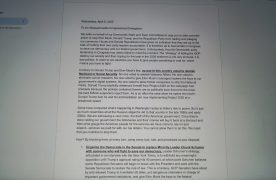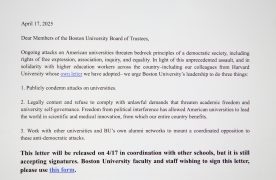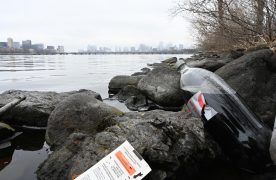“Are we in Narnia?” I wondered aloud to myself as I gazed out into the turquoise waters of Cathedral Cove.
“Actually, part of The Chronicles of Narnia was filmed here,” I heard a fellow study abroad classmate say.
To my left, a coastal cliff topped with lush green vegetation curved into an arch, allowing the other half of the beach to peak through, as if to create a portal to some other world where C.S. Lewis’ fabled lion Aslan walked in eternal sunshine.
To my right, a waterfall gently trickled from an adjacent bluff, creating a shallow pool of crystal water in which children played gleefully, splashing and laughing.
Far from the coast, seagulls rested on silver stones jutting from the salty seas, rocks that appeared geometric while at the same time somehow effortlessly organic in shape.
Of all the beaches I had visited in New Zealand yet, this was certainly my favorite.
I sighed, feeling the waves lap at my toes as the tide crept further up the sandy white shore, progressively nearer to our cluster of backpacks and beach towels. We would have to leave shortly, as this paradise would disappear with the low tide.
It’s been a long time since I have wanted to scream and cry and stomp my feet like a toddler being dragged from the ball pit at Chuck E. Cheese’s, but that’s how I felt upon leaving Cathedral Cove that day. I knew that afternoon couldn’t last forever, but I marveled at how wonderful it might be if it could.
I thought back to my New Zealand cultural class, where we learned about a classic Kiwi play called “The End of the Golden Weather.” The play tells the coming-of-age story of a starry-eyed young boy who initially sees life as a beautiful beach, full of wonder and possibility, but as the plot unfolds he becomes aware of the harsh injustices of the world. In New Zealand, the play’s title has become synonymous with the idea of “paradise lost.”
Since my arrival here, I have witnessed such beauty in both the places that I expected and those that I didn’t. And I can’t help but worry that I, too, will have to endure the end of my own “golden weather” when my time in New Zealand is up.
The unfortunate thought has prompted me to wonder about the nature of beauty itself and the manner in which it reveals itself to us — whether these breath-taking images simply burst forth as the portrait of Cathedral Cove did on the afternoon of my visit, or whether life gradually unfolds to us scenes of beauty as I witnessed watching the sunrise while perched atop the Putangirua Pinnacles.
The Pinnacles Track is a renowned hike on the eastern side of New Zealand’s North Island that leads to a badlands-erosion-style geological rock formation at the head of a valley in the Aorangi Mountain Range.
I attempted the hike myself while on a weekend trip with a group of my classmates a few weeks ago. After a solid three hours of ascending rocky stairs, we had stopped to stay in an overnight lodge for hikers, called a “hut” in New Zealand, and resolved to climb the rest of the way to the top before the crack of dawn the next morning to see the sunrise.
We awoke to darkness at 4:30 a.m. and continued to climb the stone staircase, which, to our drowsy dismay, transitioned to metal ladders about halfway through the hour-long hike to the top.
At last, we reached the Pinnacles and perched ourselves atop the jagged peaks just minutes before the 6:15 a.m. sunrise.
From between delicate clouds, the tangerine sun finally inched upwards, casting scattered orange rays on the mountainous forest below. When we arrived, opaque mist had blanketed the valley, but little by little, dawn illuminated the immense cliffs towering directly in front of us as the sun’s glowing orb slid further upward.
Amidst the silence, someone began singing “The Circle of Life.” We all laughed, as if to agree amongst ourselves that the outburst of song was a visceral response, the only way we might possibly attempt to verbalize the beauty before us.
Because it was a relatively cloudy morning, the experience lasted only minutes, and the sun soon slipped discreetly into the cover of the ashen clouds. Just like that, it was over. Beauty had again proved itself evanescent.
I am well aware that no photo, no painting, no collection of words — mine included — will even begin to successfully convey the incredible beauty of what we saw as the sun rose before us while clinging to the Pinnacles that morning. But because I was there in that awe-striking moment, where time seemed to stop for a few seconds, and “The End of the Golden Weather” was briefly forgotten altogether, I wanted to share what I saw.











